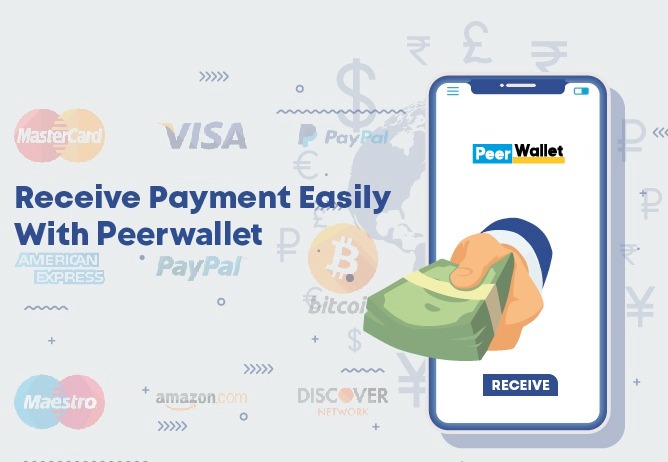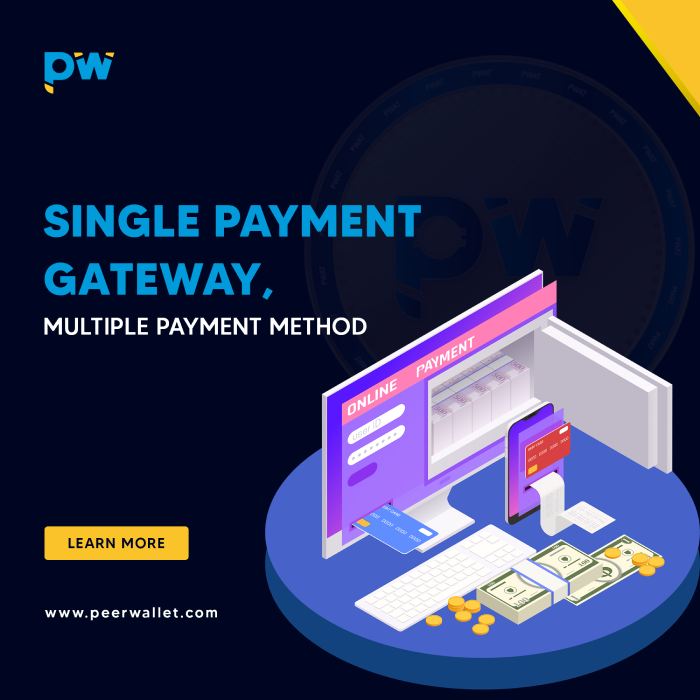The Best Way to Convert Fiat to Crypto: A Comprehensive Guide
Friday 20th of October 2023

If you're doing business online, chances are you need to be able to accept credit card payments. But if you've never done it before, the process can seem a bit daunting. Fear not! In this blog post, we'll walk you through everything you need to know about how to accept credit card payments online.
First things first: you'll need to set up a merchant account with a bank or other financial platform (such as PayPal, Stripe, or Peerwallet). This will allow you to accept credit card payments from your customers. Once you have a merchant account set up, you'll need to choose a payment gateway. A payment gateway is a service that allows you to process credit card payments securely.
There are many different payment gateway providers out there, so it's important to do your research and choose one that's right for your business. Once you've chosen a payment gateway, you'll need to integrate it with your website. This usually requires some technical knowledge, but most payment gateway providers offer support and documentation to help you through the process.
Once your payment gateway is set up and working, you'll need to start thinking about fraud prevention. Credit card fraud is a serious problem, and it's important to take steps to protect yourself and your customers from it. There are many different fraud prevention strategies, so again, it's important to do your research and choose the one that's right for your business.
But let's take a look at each step closely.
1. Choose a Payment Processor
The first step in accepting credit card payments online is to choose a payment processor. A payment processor is a company that will handle the transactions between your customer's bank and your own. There are many different payment processors out there, so it's important to do your research and choose one that best fits your needs. For example, some payment processors charge lower fees but have fewer features than others. Do your due diligence.
2. Set up an Account with the Payment Processor
Once you've chosen a payment processor, you'll need to set up an account with them. This usually involves providing some personal and business information, as well as choosing a username and password. Once your account is set up, you'll be given access to their online platform where you can begin setting up your payment options.
3. Add Your Credit Card Payment Option to Your Website
Once your account is set up with the payment processor, you'll need to add the credit card payment option to your website. This is usually done by adding a few lines of code to your website's checkout page. The code will allow the payment processor's system to interface with your website so that when a customer goes to check out, they'll be able to pay with their credit card.
4. Test Your Credit Card Payment Option
Before going live with your credit card payment option, it's important to test it out first. You can do this by making a test purchase on your own website using a dummy credit card number. This will allow you to see firsthand how the whole process works and make sure that everything is working correctly.
5. Promote your online store to customers and followers
Now that your online store is set up and ready to accept credit card payments, it's time to start promoting it to your customers and followers. You can do this by using social media, email marketing, or even just good old-fashioned word of mouth. Let people know that they can now shop online with you and make sure to give them instructions on how to do so.
6. Ship orders and receive payments
After a customer has made a purchase on your website, it's now time to ship their order and receive payment. You'll need to package up the items they ordered and send them off using the shipping method of your choice. Once the items have been shipped, the payment will be processed by the payment processor and deposited into your account.
7. Fraud prevention
As we mentioned before, credit card fraud is a serious problem, and it's important to take steps to protect yourself and your customers from it. There are many different fraud prevention strategies, so again, it's important to do your research and choose the one that's right for your business. Some common fraud prevention strategies include using AVS (address verification system) checks, requiring CVV (card verification value) codes, and setting up fraud alerts with your payment processor.
Conclusion
In this blog post, we've covered everything you need to know about how to accept credit card payments online. We've walked through the process of setting up a merchant account and choosing a payment gateway, as well as how to integrate the payment gateway with your website. We've also briefly touched on the importance of fraud prevention. Adding a credit card payment option to your website is a great way to make it easy for your customers to pay you. By following the steps outlined above, you can have everything set up and working in no time. So what are you waiting for? Start accepting credit card payments online today!

Friday 20th of October 2023
Friday 20th of October 2023

Thursday 1st of December 2022

Thursday 1st of December 2022

Thursday 1st of December 2022

Thursday 1st of December 2022

Thursday 1st of December 2022

Thursday 1st of December 2022

Thursday 1st of December 2022

Thursday 1st of December 2022

Thursday 1st of December 2022

Thursday 17th of November 2022

Wednesday 2nd of November 2022

Wednesday 2nd of November 2022

Wednesday 2nd of November 2022

Wednesday 2nd of November 2022

Wednesday 2nd of November 2022

Wednesday 2nd of November 2022

Wednesday 2nd of November 2022

Wednesday 2nd of November 2022

Wednesday 2nd of November 2022

Tuesday 11th of October 2022

Tuesday 11th of October 2022

Tuesday 11th of October 2022

Monday 10th of October 2022